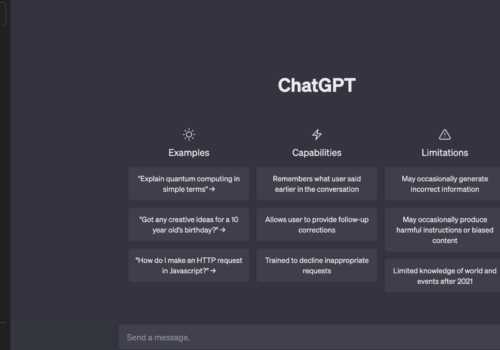
ZohoLearn More |

G SuiteLearn More |
|---|---|
| $ Pricing | $4/per user monthly | $6/per user monthly |
| Best for |
Business customers might choose Zoho Mail since it has collaboration and communication features. Several products are offered by Zoho, including Zoho |
The Google Workspace software suite, previously known as G Suite, has a range of tools for managing data, storing files, and collaborating with cowork |
| Features |
|
|
| Pros | |
|
|
| Cons | |
|
|
| Ease of Use | |
|
The user interface seems a bit “outdated” |
Backend settings are complex and confusing |
| Value For Money | |
|
Zoho is an affordable option |
G Suite Is worth it |
| Customer Support | |
|
Zoho support system 24*7 which is good |
Poor support system compared to other platforms |
Looking for an Unbiased Zoho vs G Suite 2024 Comparison, Don’t Worry, I got you covered.
The contemporary workplace must now unavoidably include a digital workstation. Given the variety of options now on the market, selecting the best platform for your particular workflow requirements may be challenging.
By comparing Zoho Workplace and Google Workspace in-depth in this article—two outstanding collaboration and workflow productivity software packages that provide a comprehensive collection of features and cloud-based applications—we want to make this decision much more straightforward.
Now, we can’t discuss the Zoho vs. G Suite (Workspace) comparison without pointing out that, despite Google Workspace being a lot more well-known platform than Zoho, the latter offering can hold its own against its much larger rival.
So let’s compare Google Workspace vs Zoho Workplace to provide helpful information on which platform is best for your business.
Zoho Overview
Business customers might choose Zoho Mail since it has collaboration and communication features. Several products are offered by Zoho, including Zoho Mail and Zoho CRM.
Making the ideal choice for you and your organization will depend on what you are searching for. Zoho is one of the most well-known software and business solutions suppliers for small companies. Their SaaS offerings are designed to improve corporate efficiency.
They also provide a clever hosted email solution for small enterprises in the form of Zoho mail. They assist organizations by offering affordable mail solutions that are simple to configure and interface with various tools and services.
Android, iPhone, and web-based platforms are all supported. Some of its primary features include a control panel, email rules, instant messaging, comprehensive search, and limitless groups. It is integrated with external programs like Asana, HubSpot, and Zapier.
G Suite Overview
The Google Workspace software suite, previously known as G Suite, has a range of tools for managing data, storing files, and collaborating with coworkers. It provides high productivity and teamwork. It distinguishes itself from the competition by delivering limitless cloud storage. In addition, it has cloud search capabilities, security, and various administrative options.
When you buy their business plan, you get more sophisticated features than the basic G suite package. Advanced tracking, files, conversations, email policy implementation choices, and cloud search are just a few of the features you may anticipate.
Customers may use web-based, iPhone, and Android devices to access the software. Cloud storage, a shared workspace, audits, document templates, and video conferencing are a few of its primary features. Additionally, it interfaces with other programs like Zoom, Squarespace, and Wrike.
Features Comparison of Zoho vs G suite
Pricing: Zoho vs G Suite
Zoho
They offer two pricing plans. See below.
- Workplace Standard costs $4/per user monthly
- Workplace Professional costs $7/per user monthly
G Suite
The three primary price tiers for G Suite are Basic, Business, and Enterprise. They do a decent job of providing strategies that would work for both more prominent and medium-sized companies. Let’s see all three pans.
- G Suite Basic costs $6/per user monthly
- G Suite Business costs $12/per user monthly
- G Suite Enterprise costs $25/per user monthly
Both Zoho and G Suite provides a wide range of plan options. Both of them are reasonably priced. It can come down to how big your company is. Additional options from G Suite may be able to meet your company’s demands.
They both provide a sizable amount of features. Still, G Suite offers more information about their plans, so you may need to get in touch with Zoho to learn more about the specific features and tools you will include with the subscription you are considering.
They provide additional features in G Suite Business and Enterprise compared to the Zoho Plans. The Basic package of G Suite would give the most excellent analogy for Zoho.
It will ultimately come down to features for that plan, which we will discuss in more depth in the section below. G Suite would be my choice if I had to select who had the most excellent plan and the most options.
Quick Links:
- Zoho SalesIQ Review: SkyRocket Your Sales With SalesIQ
- HubSpot Vs Zoho: Which Is Better CRM Software? Is HubSpot Better Than Zoho?
- Engagebay vs Zoho: Which is better CRM Software? (Detailed Comparison)
- Insane Tips to Improve Performance of Your Social Media Marketing Campaigns
Conclusion: Zoho vs G Suite 2024
From a strictly email-focused perspective, Zoho and Google both provide comparable features. Still, Google has more third-party software connectors, while Zoho has more significant interaction with social networking sites like Facebook and Twitter. I believe Zoho is a better option for startups since it is a little cheaper.








